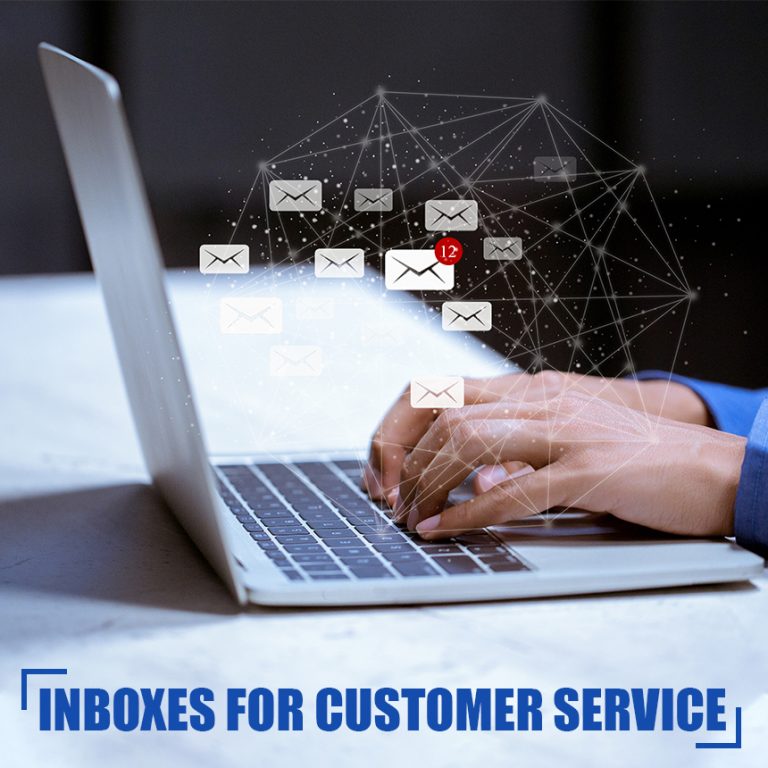
Have you ever started a business with 2 or 3 supporting members? You must have loved the work assignment and customer query resolution during those days. Isn’t it? But as soon as your business would have grown and more customer queries started flowing in, you must have observed a disaster.
Many companies, during their initial days of business, would have used shared inboxes to address customer issues. But it becomes problematic when the company and the customers grow together.
What is a Shared Inbox?
A Shared inbox is a tool that can be monitored, managed, and accessed by multiple members to send and receive emails.
It’s a centralized location for all customer interaction received and shared through emails, the same way it is managed for personal inboxes.
Once customers send their queries via email to the support team, the centralized inbox receives the message which can be viewed, addressed, and closed by active recipients.
What are the advantages of using Shared Inbox?
- Ease of Using It: A shared inbox works very similar to personal email applications. Email is a part of our day-to-day activities, and no one has to be trained on how to use it.
- Allows Convenience: Usually, on live chat or calls, customer executives need to address each query in the queue, one by one, with a defined timeline. There is a constant pressure. But in the case of shared inboxes, users can access and respond at the convenience of time. There is no time tracking or time allocation with the individual case.
- Works in Collaboration: Unlike personal emails, shared inbox emails can be actioned by several members. Assigned tasks get distributed and can be addressed by other team members. One member can respond the first time, and next time another person could look into the case.
- Can Be Easily Organized: A few shared inboxes allow organizing received emails based on defined blurbs and tags. The tags could be created on the basis of received issues or praises which are already known and classified.
- Actions Based on Historical Records: In order to respond to an ongoing conversation, members could look into previous customer interaction records and take action accordingly. It helps to keep the same context and flow in the conversation, and the chances of missing the customer issue are very low.
Small companies usually prefer shared inboxes because of the benefits, as mentioned above. However, as soon as the company and customer queries grow, these benefits turn into disadvantages.
What are Cons of Shared Inbox?
- Missing Customer Details: Basic email inboxes do not provide customer details and records, which makes the task difficult to resolve a query. No historical records mean longer query resolution due to a lack of context.
- Confusion Due to Collision: Most of the time, it happens that shared inbox emails get accessed, opened, and responded by different members at the same time. It leads to a state of confusion that who is going to address the email, further delaying the action.
- Incorrect Response to the Customer: Due to the conflict, different communications might be shared with the customer. The conflict might arise due to missing tags or notes for the next person to address.
- Missing Insights: Emails usually do not keep a record of the type of issues or queries received. Missing classification options such as blurbs or tags could result in the loss of knowledge that could be shared with the management for improvement in different departments.
- Ownership Issues: Since everyone could access received emails at the same time, there are chances that lack of ownership could be observed among the responders. The first person might pass emails for the next person, whereas the second person might think the first person would address it. Due to this confusion, the email might not even get addressed at all.
How ONPASSIVE’s Shared Inbox tool Could be a Solution?
ONPASSIVE has developed an AI-driven shared inbox that could semi-automate the customer service experience.
Features of ONPASSIVE Shared Inbox:
- Automated Work Assignment: The tool is designed to identify associates who could pick the task and resolve the issue at once. The auto-assignment creates a tag to fetch who is available and who is working on already assigned emails.
- Ticket Assignment: There are some cases where customer support executives might have to forward the issue via tickets. In such a case, the executives need not have to leave the shared inbox and could raise tickets on the tool itself.
- Access to Customer Details: ONPASSIVE shared inbox allows the responders to access customer details being on the tool while working on a case. It provides details such as name, location, email ID, last interaction, and details related to purchase order and product returns.
- Track the Progress: The dashboard allows access details of the number of assigned tasks to the number of resolved queries. It can also share details of the number of tickets flowing out of the system and missed and met SLAs.
- Easy Tagging: Responders could easily tag issue or a person to an assigned email. This way, insights are not lost, and if an assigned task has to be forwarded to the person in a higher position, then it makes the job easier.
Hope this article helps you decide whether Shared Inboxes are good for your business or not. We recommend you to try ONPASSIVE’s Shared Inbox to eliminate challenges as mentioned above that could simplify and amplify your customer service process.


